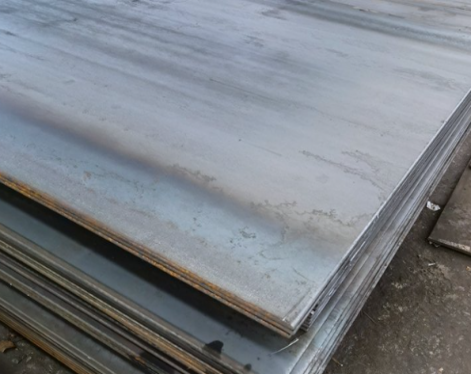Carbon steel plate is a type of steel widely used in various fields such as engineering structures, machinery manufacturing, shipbuilding, pressure vessels, bridges, and construction. Due to the numerous global standard systems—American standards, European standards, Japanese standards, Chinese standards, international standards, etc.—understanding "what standards/specifications exist for carbon steel plates, their characteristics, and applicable scopes" is crucial when selecting, procuring, or designing materials. This article will systematically introduce the specifications closely related to "carbon steel plates" in mainstream standard systems, analyze their correspondences and differences, and provide suggestions on how to select appropriate standards.
Mainstream Carbon Steel Plate Standards
Carbon steel plate standards vary by country, region, and international system. The most commonly referenced standards include:

There is no single “global standard” for carbon steel plates. Knowing these standards and correctly mapping them is critical in design, procurement, and inspection.
Detailed Explanation of Major Standards
Here’s a closer look at common standards representing different carbon steel plate applications and properties:
ASTM A36
A widely used carbon structural steel plate standard in the U.S., suitable for bridges and buildings, for riveted, bolted, and welded structures.
Mechanical properties (for hot-rolled plates ≤ 200 mm thick): minimum yield strength ~250 MPa, tensile strength 400–550 MPa, elongation ≥20%.
Cost-effective, easy to weld and machine, commonly used for general structures, equipment bases, and light to medium structural components.
ASTM A283
Covers low- to medium-strength carbon steel plates, divided into Grades A/B/C/D.
Widely used where structural strength requirements are not high and cost is a factor.
ASTM A516 / ASTM A537
A516 is for boilers and pressure vessels, requiring good toughness and fracture resistance under internal pressure and temperature.
A537 is intended for fusion-welded pressure vessels, offering heat-treated carbon steel properties.
ASTM A572 / A573
A572 is a high-strength, low-alloy structural steel (HSLA) suitable for bridges and structures requiring high strength with reduced weight.
A573 is a carbon-manganese-silicon structural steel plate offering balanced mechanical properties for certain applications.
EN 10025 (European Standard)
Specifies hot-rolled steel plates/sections for structural applications.
Common grades: S235JR, S275JR, S355JR.
Provides good weldability, machinability, and structural reliability, widely adopted in European and international projects.
JIS G3101 (Japanese Standard)
For general structural hot-rolled steel plates, with grades such as SS400.
Used in construction, machinery, and shipbuilding.
Other JIS standards (SPHC, SPHD, SPHE) cover cold-rolled or thin plates for forming, stamping, and component fabrication.
Chinese GB Standards
Common structural steel/low-alloy steel grades: Q195, Q235, Q275, Q345.
Executed under GB/T 700, GB/T 3274.
Correspond roughly to low-carbon structural steels in ASTM, EN, or JIS systems and are widely used in bridges, buildings, machinery, and structural projects.
Mainstream Carbon Steel Plate Standards
Carbon steel plate standards vary by country, region, and international system. The most commonly referenced standards include:
| System / Organization | :Major Standards / Specifications (Carbon / Carbon-Manganese / Structural Steel Plates) |
|---|---|
| ASTM International (USA) | :ASTM A36, ASTM A283 (Grades A/B/C/D), ASTM A516, ASTM A572, ASTM A537, ASTM A573, and hot-rolled/cold-rolled sheets like ASTM A1011/A1011M. |
| European / EN Standards | :EN 10025 series (e.g., S235JR, S275JR, S355JR). |
| Japanese Standards (JIS) | :JIS G3101 (e.g., SS400), SPHC / SPHD / SPHE for sheets and plates. |
| Chinese Standards (GB) | :Q195 / Q235 / Q275 / Q345 for structural steel or low-alloy steel, executed under GB/T 700, GB/T 3274. |
| Other / International | :DIN (Germany), ISO, GOST (Russia/former Soviet Union) for structural or engineering steel. |

There is no single “global standard” for carbon steel plates. Knowing these standards and correctly mapping them is critical in design, procurement, and inspection.
Detailed Explanation of Major Standards
Here’s a closer look at common standards representing different carbon steel plate applications and properties:
ASTM A36
A widely used carbon structural steel plate standard in the U.S., suitable for bridges and buildings, for riveted, bolted, and welded structures.
Mechanical properties (for hot-rolled plates ≤ 200 mm thick): minimum yield strength ~250 MPa, tensile strength 400–550 MPa, elongation ≥20%.
Cost-effective, easy to weld and machine, commonly used for general structures, equipment bases, and light to medium structural components.
ASTM A283
Covers low- to medium-strength carbon steel plates, divided into Grades A/B/C/D.
Widely used where structural strength requirements are not high and cost is a factor.
ASTM A516 / ASTM A537
A516 is for boilers and pressure vessels, requiring good toughness and fracture resistance under internal pressure and temperature.
A537 is intended for fusion-welded pressure vessels, offering heat-treated carbon steel properties.
ASTM A572 / A573
A572 is a high-strength, low-alloy structural steel (HSLA) suitable for bridges and structures requiring high strength with reduced weight.
A573 is a carbon-manganese-silicon structural steel plate offering balanced mechanical properties for certain applications.
EN 10025 (European Standard)
Specifies hot-rolled steel plates/sections for structural applications.
Common grades: S235JR, S275JR, S355JR.
Provides good weldability, machinability, and structural reliability, widely adopted in European and international projects.
JIS G3101 (Japanese Standard)
For general structural hot-rolled steel plates, with grades such as SS400.
Used in construction, machinery, and shipbuilding.
Other JIS standards (SPHC, SPHD, SPHE) cover cold-rolled or thin plates for forming, stamping, and component fabrication.
Chinese GB Standards
Common structural steel/low-alloy steel grades: Q195, Q235, Q275, Q345.
Executed under GB/T 700, GB/T 3274.
Correspond roughly to low-carbon structural steels in ASTM, EN, or JIS systems and are widely used in bridges, buildings, machinery, and structural projects.









